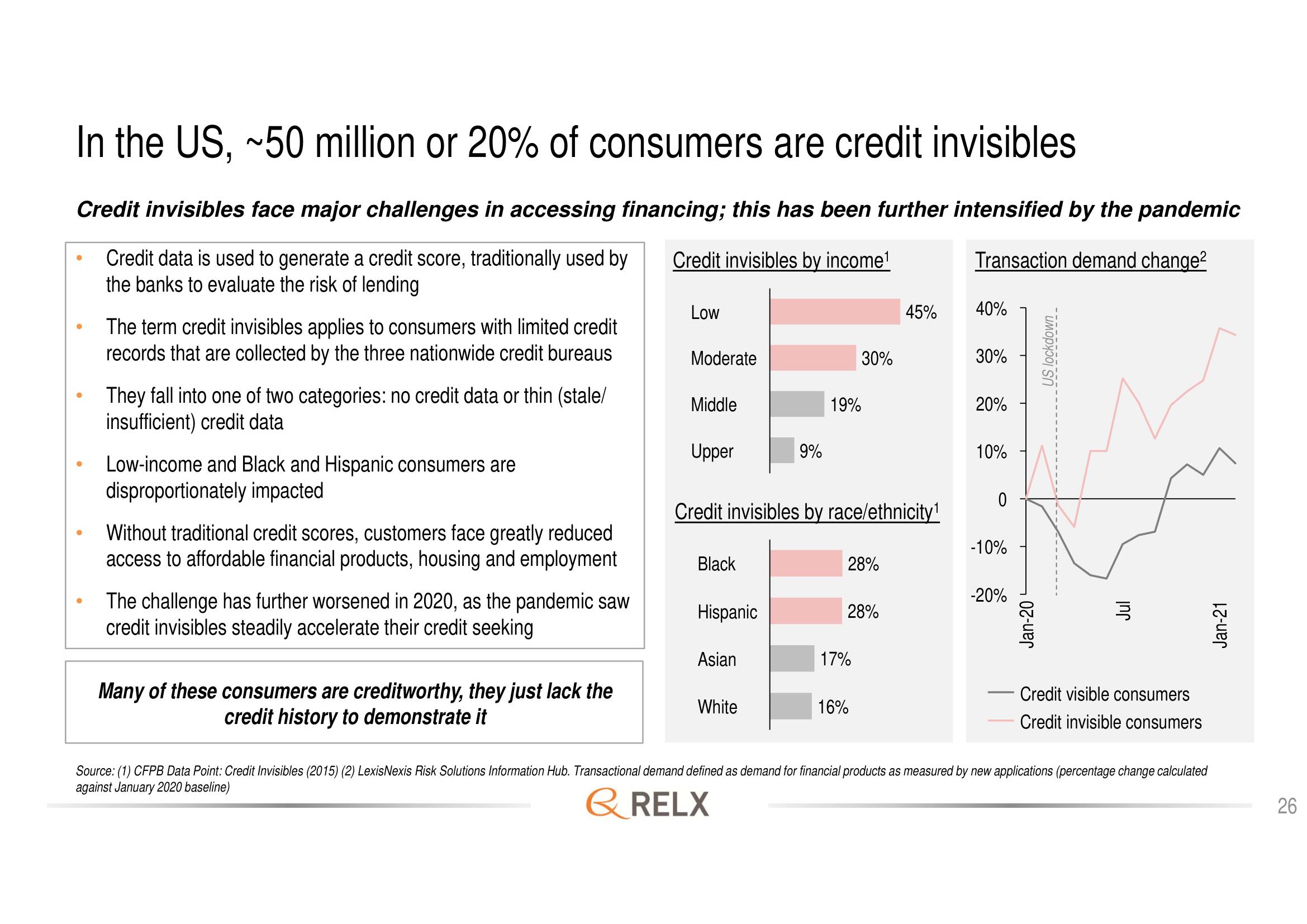RELX Investor Day Presentation Deck
In the US, ~50 million or 20% of consumers are credit invisibles
Credit invisibles face major challenges in accessing financing; this has been further intensified by the pandemic
Credit invisibles by income¹
Transaction demand change²
Credit data is used to generate a credit score, traditionally used by
the banks to evaluate the risk of lending
The term credit invisibles applies to consumers with limited credit
records that are collected by the three nationwide credit bureaus
They fall into one of two categories: no credit data or thin (stale/
insufficient) credit data
Low-income and Black and Hispanic consumers are
disproportionately impacted
Without traditional credit scores, customers face greatly reduced
access to affordable financial products, housing and employment
The challenge has further worsened in 2020, as the pandemic saw
credit invisibles steadily accelerate their credit seeking
Many of these consumers are creditworthy, they just lack the
credit history to demonstrate it
Low
Moderate
Middle
Upper
Black
Hispanic
Asian
9%
Credit invisibles by race/ethnicity¹
White
19%
30%
28%
28%
17%
16%
45%
40%
30%
20%
10%
0
-10%
-20%
Jan-20
US lockdown
Jul
Credit visible consumers
Credit invisible consumers
Source: (1) CFPB Data Point: Credit Invisibles (2015) (2) LexisNexis Risk Solutions Information Hub. Transactional demand defined as demand for financial products as measured by new applications (percentage change calculated
against January 2020 baseline)
& RELX
Jan-21
26View entire presentation